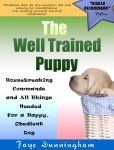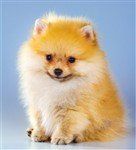Why Does My Pomeranian Growl?
Overview
Poms look so darn cute, it can be surprising and even disappointing to an owner when their puppy or dog growls.
For those with puppies, owners worry that this is a sign that their Pomeranian going to have a bad temperament. For owners of adults, it can raise a red flag is an otherwise calm and happy dog suddenly and without warning begins to growl, especially if it is directed at close human family members.
There are several reasons why this toy breed dog will growl.
We will look at the reasons, to try and help you sort out what is happening. No matter what the cause, there is always an answer to resolve the issue that is causing this particular vocalization.
Distinguishing Playful Growls From Threatening Ones
Growling is not always an indication of anger. It is normal for canines of all sizes to make this noise when happy and excited. There will be some differences that you will be able to notice.
The Pitch and Duration–
An angry growl will be deep; it will reverberate throughout the Pom’s body. Often it will be one, long sound. On the other hand, if it is done out of happiness, it will have a higher, softer tone and is often intermingled with silence or yip-like noises.
Body Stance –
When growling is done in a threatening way, a Pomeranian will bare his teeth and the tail will rise. Additionally, it will be common for the dog to stare at the person or element that is causing the annoyance. When done out of excitement, the Pom will not be staring, he or she will have a relaxed body stance and will often be romping around or focused on a physical activity.
For Puppies
For puppies new to a home, there is often a transitional period in which the pup is trying very hard to figure out where he or she fits in. Canine instinct tells a dog that they live in a pack (your family, this includes all humans and all other animals that are in the home)…
And by canine instinct, each member of that pack has a place. Most important is for a puppy to understand who the leader of the pack is. Some dogs assume that they are the leader, until proven otherwise.
It is during this time of uncertainty that puppies may growl, behave in a stubborn manner (not listening to commands) and/or behave as if they rule the house (because a human(s) has not yet taught them differently).
The only way to resolve this, and not just for growling, but to establish a clear line of hierarchy that sets the stage for all sorts of training (housebreaking, commands, socialization) is for all human members of the household to establish themselves as leader. This is achieved by following certain feeding methods, using the correct tone of voice and proper body language. It involves knowing when to step in to correct behavior and how to do so in a way that is loving, yet sets makes it clear that you are to be listened to.
Most people don’t realize it, however when a dog does not know who is in charge and behaves in a way to test it, it can be very stressful on him. Canines are much happier and much better behaved once they know that their human is their responsible, caring leader. After this lesson has been learned, dogs can then relax, feeling safe and without the weight and burden that comes along with positioning to be leader.

If you feel that your Pomeranian is growling in an attempt to show dominance or in a threatening or challenging way, we would highly recommended Faye Dunningham’s book: The Well Trained Puppy: Housebreaking, Commands to Shape Behavior and All Training Needed for a Happy, Obedient Dog
If a Pom Growls When You Pick Him/Her Up
Another reason why a pup or dog will growl is in reaction to discomfort, which can occur if this small dog is not picked up properly. If you have seen your Pomeranian during bath time (and if you are a new owner you may have not yet had the chance to do so), then you know just how tiny the body is, hidden by all of that thick fur! Bones are fragile and there is not much of a fat layer to protect this little toy dog.
In addition, puppies who are still trying to acclimate to a new environment can be jumpy…And being suddenly swooped up can be startling. The best way to pick up a Pomeranian is to approach from the side. Do not bend over to pick him up, rather bend over or kneel down to become closer to your Pom’s level.
While speaking in a calm (but not overly soothing) tone of voice, slip one hand under the rump and the other spread out, supporting the chest, with fingers tucked under the underarms.
For Poms that are not used to being handled, do not outstretch your arms to have him dangling in the air to show them off…Rather, bring your Pomeranian close to body, gently keeping the pup against your chest.
If you will be walking around with your puppy, go easy until he or she is used to being carried…Do not run or make sudden movements…rather walk in a steady calm manner, keeping your grip firm enough to offer safely, but not in an overly hard embrace.
If your Pomeranian growls while you are holding him and you are sure that he is not in discomfort and you are holding him as explained above, do not immediately place him down. If you do, it sends the message that: growling = getting what I want…and this is not the lesson that you want your pup to learn. It is best to wait until a count of ten, and only if the growling has stopped, place him back down.
When you do place your Pom back down, again bend or kneel to do so. Place his rump down on the floor, as you slip your hand out, and then remove your other hand that was snug against his chest and belly.
When Adults Suddenly Show Signs of Aggression
By the end of adolescence, a canine’s personality
is rather set in. While behavioral training can certainly address certain issues, if a normally calm Pomeranian suddenly becomes aggressive, baring teeth and growling, this is often due to the dog being in pain. This can be from an injury or from an illness.
Sadly, our Poms cannot let us know when something ails them, therefore it is up to owners to notice the signs such as this. Even if you have just taken your dog to the vet and he received the “all clear”, do not allow that to sway you. An injury can happen quickly and it can happen without owners knowing.
For example, luxating patella can happen in a mere second, with a dog only letting out a yelp at the very moment that the kneecap slips out of place…It will only be later when swelling sets in that the pain increases enough to change the dog’s behavior. As the discomfort increases, a dog feels more vulnerable, and this can cause the dog to growl and act defensive.
Hypothyroidism can cause behavioral changes (including aggression and growling), before other physical symptoms (such as thinning hair) develop.
Therefore, when in doubt, always bring your Pomeranian for a checkup, as a change in behavior is often a sign of a medical issue.


